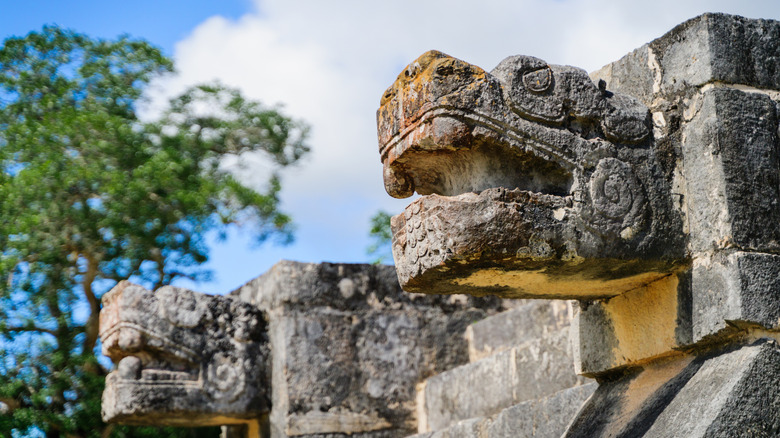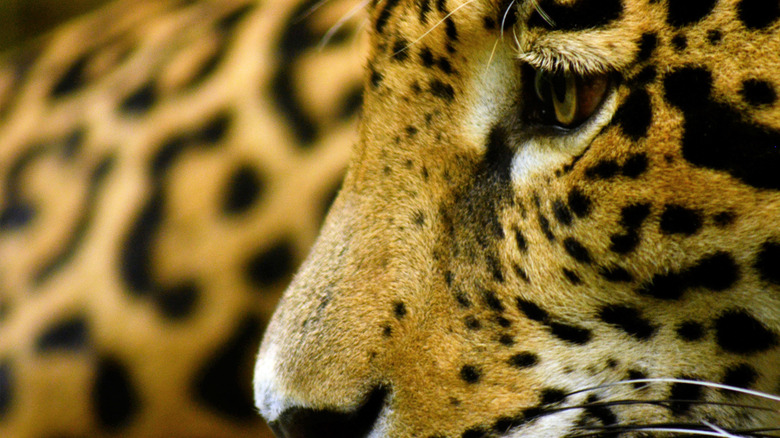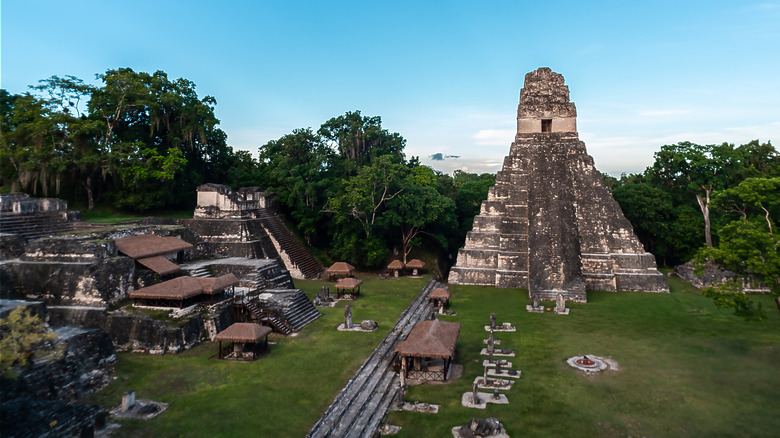Why The Jaguar Was So Important To Ancient Mayans
Modern world religions have a range of animal symbols that they turn to help explain their ideas around what is considered holy or divine. In Hinduism, the cow is revered as a holy animal, representing the divine and, through its milk, the resources offered by the earth. In Christianity, there is the lamb, which is associated with innocence and the figure of Jesus Christ himself.
And ancient religious societies were no different. Take, for example, the Maya, a powerful civilization that lived in Mesoamerica, or modern day Mexico, Guatemala, Belize, Honduras, El Salvador, and Nicaragua. The complex society first emerged around 4,000 years ago and continued right up until its destruction in the 16th century. Mayans were famed for their incredible artistic achievements, especially in sculpture, ceramics, and painting, the images of which typically featured figures of gods and other spiritual beings from their polytheistic religion.
And throughout Mayan art you find a recurring motif: The jaguar, which was considered a powerful symbol in their culture. Considered deities, it was believed that the jaguar was the ruler of the underworld — which the Mayans believed was accessed through sinkholes — and moved between the worlds of the dead and the living. They also believed that the jaguar became a sun god in the daytime, traveling across the sky before returning to the underworld at sundown.
Jaguar symbology in the Mayan civilization
For the thousands of years of the Mayan civilization's existence, no wild animal was as feared and respected as the jaguar. The great beast roamed through the thick jungles in which the famous Mayan cities and temples were built all those centuries ago. Indeed, some of these temples were dedicated entirely to worship of the jaguar. Though they do not typically pursue humans and prefer to keep out of the way of settlements, it is easy to imagine that the Maya must have encountered the animals relatively frequently. And in such instances, their power, agility, and deadliness would have been plain to see.
As such, the jaguar was taken as a symbol of strength, and it would have special significance for Mayan figures wanting to denote their own power in society. Leaders would wear jaguar remains such as skulls and pelts and decorate their attire with fangs and claws of the creatures. Elite soldiers did the same, believing that the objects would protect them and connect them with the divine.
Honoring the jaguar — and evidence of ritual sacrifice
One of the most famous dedications to the jaguar is found in the ruined Mayan city of Tikal, where travelers can still visit the Temple of the Great Jaguar, built around 732 A.D. The structure is an enormous pyramid, nearly 150 feet tall, and features an imposing lintel of a king of a jaguar throne. But while the Mayans certainly held America's largest predator in great esteem, there is some shocking evidence that they didn't refrain from using the animals to their own ends. Recent research shows that the beasts may have been rounded up and routinely sacrificed during periods of unrest. The 7th century king of Copan, Yax Pasaj Chan Yopaat, for example, had jaguars sacrificed in honor of himself and his predecessors. He would have relied on wildlife traffickers to bring him the animals, which were likely absent from his partially deforested territory at the time.
Jaguars were long in decline in America after the arrival of European colonizers. However, today conservation efforts are bringing the big cats back to the jungle. While there were just 4,025 wild jaguars in Mexico in 2010, that number increased to 4,766 in 2018 (per The New York Times).


